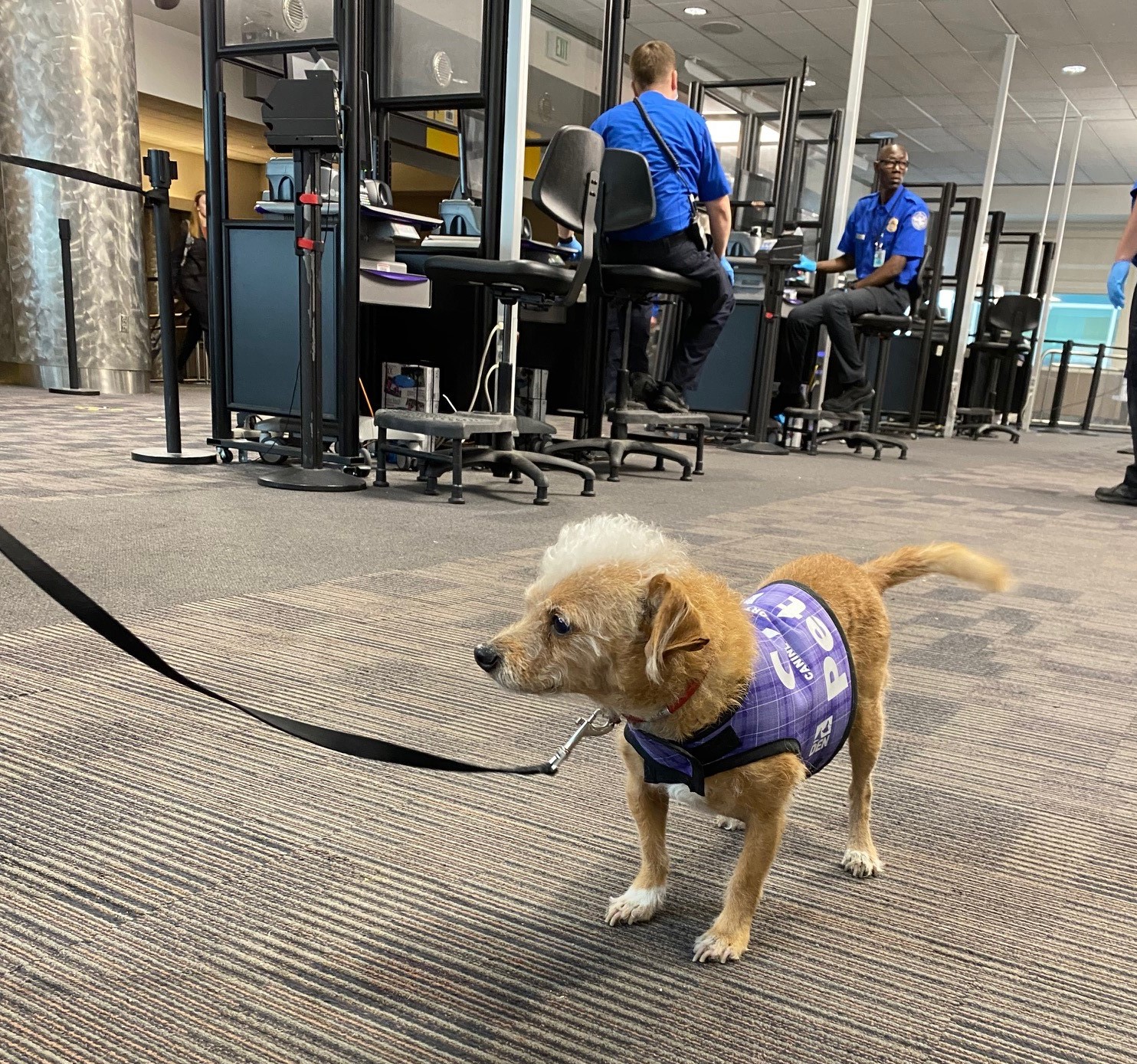
DENVER - With the holiday travel period upon us, the Transportation Security Administration (TSA) is expecting to see a marked increase in the number of pets brought to the security checkpoint at Denver International Airport (DEN). Traveling through the security checkpoint with your pet can be easy when you know what to expect.
“TSA recognizes that for many pet owners, their animals are an extension of their family and they want to travel together,” said TSA Deputy Federal Security Director for Colorado Anne Cross “Becoming familiar with the screening procedures and how to clear security quickly and easily is the first step to embarking on a great trip with your pet.”
In the past few weeks, TSA has discovered two pets during the X-ray screening process. The first was a cat who had been placed in a piece of checked luggage at John F. Kennedy International Airport in New York. The second incident involved a dog who was screened at the security checkpoint at Dane County Regional Airport in Madison, Wisconsin. In both cases, the pets were unharmed, but should not have been screened through an X-ray unit.
Small pets should travel in the cabin of the aircraft with their owners. TSA will screen pets via the security checkpoint. Below is what pet owners can expect:
- All pets should be brought to the security checkpoint in a hand-held travel carrier. Remove the pet from the carrier just prior to the beginning of the screening process.
- Place the empty travel carrier so it can be x-rayed.
- Never place a pet in the x-ray tunnel. The x-ray at the security checkpoint is used to screen passengers’ personal property and carry-on luggage only.
- If possible, carry the pet during the screening process. Alternately, a pet can walk through the screening process if the owner has the pet on a leash.
- A TSA officer will give the pet owner’s hands an explosive trace detection swab to ensure there is no explosive residue on the owner’s hands.
- Once the screening process is complete, owners should return the pet to the travel carrier at the re-composure area away from the security checkpoint. This location helps ensure the safety of the pet as well as other passengers.
Other helpful travel tips to make your trip thru security as easy as possible include:
- Acclimate the pet to the process of traveling by familiarizing it with the travel carrier in the days leading up to the trip. This familiarization will help ensure the pet is more relaxed as it travels through the security process and the airport.
- Be on the lookout for “working” K9s and handlers at the airport. Areas where it is common to see a working K9 at airports may include a security checkpoint or in the terminal concourse. If you encounter a working canine, please be screened at an alternate checkpoint.
- Know the temperament of your pet and ensure that you can maintain control of it in a busy and potentially crowded transportation environment.
- Familiarize yourself with the pet relief areas at DEN. There are multiple locations available.
- ✔ Jeppesen Terminal, Level 2 on the northwest side (pre-security)
- ✔ A Gates, Level 2, near the U.S. Mail drop
- ✔ B Gates, Level 2, near the U.S. Mail drop
- ✔ C Gates, Level 2, near the U.S. Mail drop
Below are additional tips for traveling with pets provided by Foothills Animal Shelter in Golden, Colorado.
- Ensure your pet is healthy and up to date on vaccinations before you travel. Check with your veterinarian for a health certificate. Make sure you have your pet’s vaccination records.
- Book a direct flight when possible.
- Ensure your pet is microchipped and wearing a collar and tag with current, accurate information.
- Purchase a pet-friendly crate large enough for your pet to stand, sit, and turn around comfortably.
- Make sure you have fresh food and water for your pet.
- Take your dog for a walk and allow them to go to the bathroom before your flight.
- When traveling with cats, provide a small elimination area in the carrier or be thoughtful with their feeding schedule, so they don’t need to go to the bathroom during the flight.
- Help your pet acclimate to the carrier ahead of the flight. Leave the carrier in their living space and feed them in the carrier to ensure they are comfortable.
- Ensure you let the airline personnel know you are traveling with a pet.
Pet travel restrictions vary by airline, so please check with your air carrier before traveling with your pet. For information on traveling with service animals or for other special circumstances, please reach out to the TSA Contact Center by calling 866-289-9673 or by emailing TSAContactCenter@tsa.dhs.gov.
